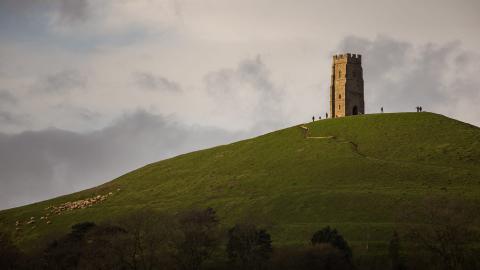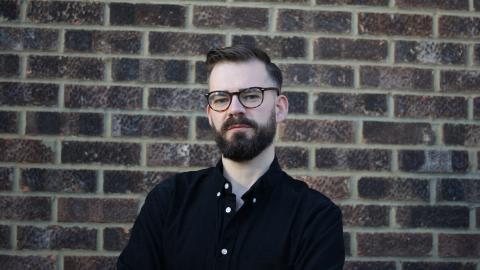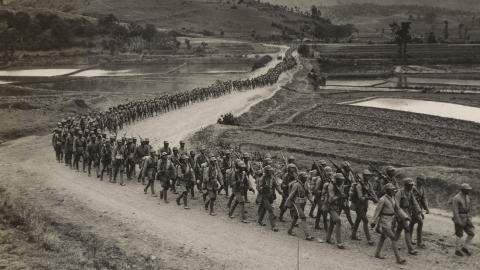The destruction of Warsaw: the Nazi plan to destroy a city
The planned destruction of Warsaw had been on the cards before German tanks and troops rolled over the border into Poland at the start of September 1939.
On the 1st of September 2019, President Frank-Walter Steinmeier of Germany took to the podium in Warsaw’s Piłsudski Square at an event to mark the eightieth anniversary of the Nazi invasion of Poland.
'In no other square in Europe do I find it more difficult to speak, and to address you in my native language of German,' Steinmeier told the assembled crowds. 'I ask for forgiveness for Germany’s historical guilt and I recognise our enduring responsibility.'
But why did the president find it so difficult to say those words in that particular square? Because seventy-five years before, the Nazis set about wiping Warsaw off the face of the earth.
The planned destruction of Warsaw had been on the cards before German tanks and troops rolled over the border into Poland at the start of September 1939. Three months before the invasion, a plan to replace the Polish capital with a small German town had caught the eye of Adolf Hitler. This was the ‘Pabst Plan’, named after its creator, Friedrich Pabst. The plan presumed the city would be cleared of its inhabitants and razed to the ground during and after a war between Poland and Germany. In its place, a small town of 130,000 German inhabitants would be built on the right bank of the River Vistula. To service the town, a slave labour camp would be built on the left bank housing 80,000 Polish prisoners. Rifling through the Pabst Plan, Hitler liked what he saw.
The next five years of occupation would be a truly brutal affair...
Eight days after Germany invaded Poland, the bombing of Warsaw commenced. The assault culminated in what was then the biggest air raid the world had ever seen on the 25th of September 1939. On that terrifying day, the city was pummelled by 560 tonnes of high explosives, 72 tonnes of incendiaries and heavy artillery fire. By the end of what would become known as the Siege of Warsaw, approximately 18,000 civilians had lost their lives, 40% of the city’s buildings had been damaged and a further 10% had been completely destroyed. Worse - much, much worse - was to follow.
The Wehrmacht entered the city of Warsaw on the 1st of October. The next five years of occupation would be a truly brutal affair. The first to feel the full force of Nazi cruelty were the Jews. The city was home to around 270,000 Jews before the war. That number had swelled as both Polish and Jewish refugees flooded into the heavily defended city as the Nazis advanced towards the capital.
After Warsaw fell, most of the city’s Jews were rounded up and crammed into a vast ghetto – the largest of the war – situated immediately to the northeast of the city’s ancient Old and New Towns. The Warsaw Ghetto was a walled-off, disease-infested slum area where death was a daily occurrence. The ghetto’s inhabitants were subjected to regular roundups; lined up and marched off to transportation trains heading for extermination centres such as Auschwitz and Treblinka. Eventually, a resistance movement arose aiming to stop these mass deportations, leading to the Warsaw Ghetto Uprising of January 1943 that saw Jewish resistance fighters valiantly holding off the Nazis for four months before the uprising was crushed in April. After the Nazis regained control of the ghetto, all remaining Jews were either shot or rounded up and deported to concentration camps. The ghetto was then razed to the ground, with hardly a building left standing across over one square mile of the city centre.
'When we crush the uprising, Warsaw will get what it deserves – complete annihilation.'
Elsewhere in the city, the Nazis operated a policy of collective responsibility, which meant any act of resistance was punished by the deaths of not only those who had been involved but of the innocent as well. This meant that by 1944, many thousands of the city’s inhabitants had been murdered. This led to the Warsaw Uprising which began on the 1st of August 1944 – a last desperate act of resistance against a brutal regime that would eventually be crushed sixty-three days later. By 1944, 60% of the city’s population, some 800,000 people, had been killed. The rest, 250,000 people, were deported from the city after the uprising. Many would end their days in concentration camps.
'When we crush the uprising, Warsaw will get what it deserves – complete annihilation.' These were the words of Hans Frank, the head of the German government in Poland. Hitler and Himmler agreed, and Warsaw’s fate was sealed.
Nothing was to be spared. Engineers armed with flamethrowers and high explosives were dispatched all over the city, supervised, astonishingly, by German architectural experts and historians. Street by street, these demolition teams methodically burned and dynamited everything in their paths. Special attention was given to the city’s most important historical buildings, as well as to the National Archives and the city’s libraries and monuments.
The Royal Castle, a 16th Century baroque pile that stood at the entrance to the city’s ancient Old Town had already been badly damaged and looted after the invasion of 1939. On the 4th of September 1944, the castle’s walls were dynamited, leaving nothing but a huge pile of rubble.
In October, the Nazis turned their attention to Warsaw’s rich artistic and written heritage. Thousands upon thousands of priceless manuscripts, books, pamphlets, drawings and prints were deliberately destroyed – an irreplaceable loss. The libraries and museums that housed these treasures were themselves then razed to the ground.
In November, St. John’s Cathedral - already badly damaged during the Warsaw Uprising - was dynamited into dust. St. John’s was one of many of the city’s exquisite ecclesiastical buildings that the Nazis destroyed. Other notable examples were the 16th Century Gothic Church of the Visitation of the Blessed Virgin Mary and the 17th Century Polish Mannerist Jesuit Church. The twin-towered Holy Cross Church’s baroque facade had already been blasted to smithereens by Goliath tracked mines in September. The Germans would destroy the rest of the church in January 1945.
By the time the Nazis abandoned the city in January 1945, about 85% of Warsaw had been completely destroyed.
December saw the destruction of many of the city’s grand palaces. The Brühl Palace, one of the city’s finest examples of rococo architecture met its end on the 18th of October. The mighty Saxon Palace, an enormous neoclassical complex that dominated the city’s main Piłsudski Square was dynamited nine days after the destruction of the Brühl Palace. All that remained of the giant building was a small section of its central arcade which housed the Tomb of the Unknown Soldier. That this monument survived is a minor miracle, and it can still be seen in Piłsudski Square to this day.
By the time the Nazis abandoned the city in January 1945, about 85% of Warsaw had been completely destroyed. What had once been one of the most beautiful cities in Central Europe was now a wasteland. Its cultural treasures had either been stolen or deliberately destroyed; its architectural gems reduced to blackened rubble. What would become of this once fine city?
That was the question the occupying Soviets and the communist government that came to power after the war wrestled with. One idea was to move Poland’s capital elsewhere and leave the ruins of Warsaw as they were – a giant monument to the folly of war and a stark reminder of the atrocities committed by the Nazis. However, this idea proved impossible because people were quick to flood back to the city once the war was over. Without seeking permission or instruction, the returning Varsovians began to clear away the rubble and rebuild their city, often with their bare hands. It quickly became clear to the powers-that-be that Warsaw would be rebuilt whether they liked it or not.
By February 1945, the Warsaw Reconstruction Committee had been formed to oversee the city’s recovery. But how, exactly, was the city to be rebuilt? It was very quickly decided that large swathes of the city’s Old Town and New Town would be reconstructed to look as they did before Warsaw’s destruction. Pre-war photographs, architectural drawings and 18th Century paintings by the Italian artists Marcello Bacciarelli and Bernardo Bellotto were studied and used as guides by teams of experts including architects, archaeologists and conservators to help them recreate what was lost. Brick by brick, stone by stone, the ancient heart of the old city began to rise again.
Over the following three decades, restoration clipped along at a brisk pace. Back up went many of the city’s great churches and cathedrals. Many of Warsaw’s imposing palaces, such as the Palace of the Four Winds, the Copper-Roof Palace and the Ostrogski Palace, were meticulously recreated both inside and out. Also restored to its former glory was the Royal Route, an elegant boulevard lined with grand government buildings, restaurants, shops and hotels. Reconstruction of the Old Town, complete with its world-famous Market Place, continued into the 1960s. A sizeable section of the New Town was also restored, though the decision was taken not to rebuild it all. The Royal Castle was one of the last buildings to be restored, reconstructed between 1971 and 1984. 500,000 people a year now pass through its gates, many unaware that they are entering a building that is less than fifty years old.
Take a stroll round the Old and New Towns of the Polish capital today and it is hard to believe that this UNESCO World Heritage Site was a burned-out, blackened wasteland seventy-five years ago. Much of what was lost has been lovingly recreated, with just a few of the city centre’s jewels such as the imposing Saxon Palace and the Brühl Palace yet to be rebuilt. The destruction of the Polish capital was just one of many crimes committed by the Nazis during World War II. By recreating what the Nazis thought they had destroyed forever, the people of Warsaw created one of the most defiant symbols of the triumph of good over evil.
















